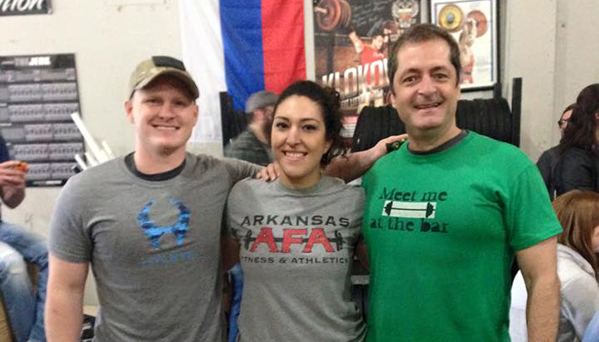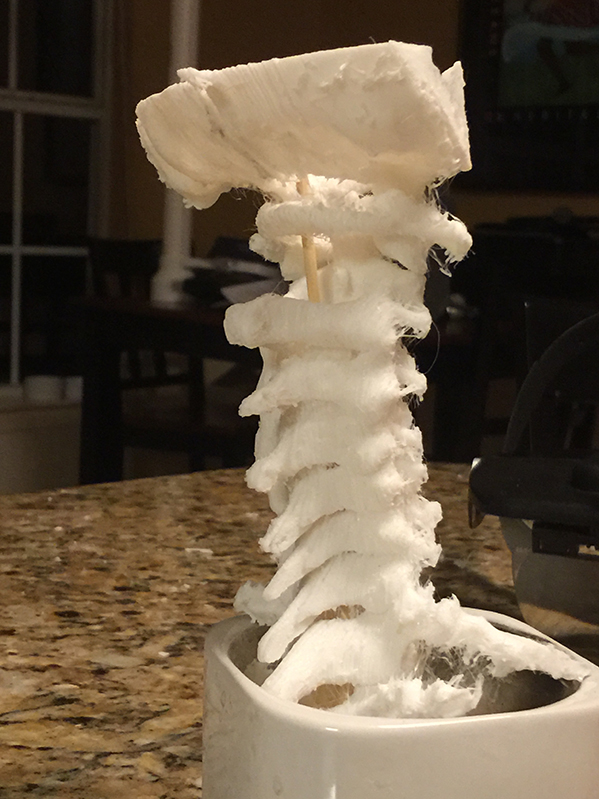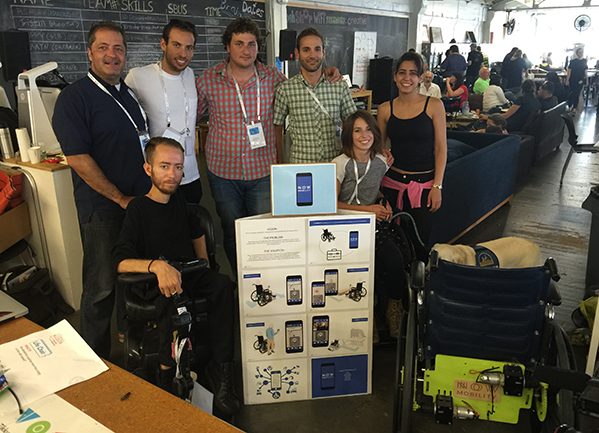2015-Nov-06
At the Crossroads of Creativity, Technology and Service
by Mike Kelley · Solutions Integration Architect, Global Enterprise Theatre · U.S.
Have you noticed how doing the right thing for yourself sometimes leads to doing the right thing for someone else?
Recently, in my shop at home in Little Rock, Arkansas, United States, I took on a project with the dual goals of improving my health and indulging my passion for making things. As a competitive weightlifter, I consider myself a pretty healthy guy. But I also suffer from a degenerative spinal disorder that can be a pain in the neck, literally. I decided to create a 3D model of my cervical spine, to show my surgeon. I figured it might help me, and him, come to grips with my condition.

I started with a CT scan, which consists of a series of two-dimensional pictures of that part of my spine. I figured out a way to convert the CT scan to a 3D object that I was able to print through open source software. I have access to a 3D printer through Innovation Hub my local "makerspace," which enabled me to print my spine.
Using the 3D printer, I created an amazing replica of my upper spine. When I showed it to my surgeon, he was fascinated. He said he'd never seen anything like it. As a visual person, I'd had trouble deciphering my CT scan, but the 3D model brought more clarity to me. I believe it's an approach that can lead to better-informed decisions.

Here's where doing the right thing for myself turned into doing the right thing for someone else. After I printed the 3D model, I was invited to participate in the Bay Area Makeathon for Assistive Technology. The event is a three-day competition where teams create solutions for challenges faced by differently abled people. Teams collaborate on solutions using skills like product design, coding and 3D printing. I jumped at the opportunity to represent Cisco and even wore a Cisco shirt every day.
Our team of six hailed from all corners of the world. The challenge we selected—deemed the most ambitious in the event—was to create a 21st century wheelchair. We took a US$60 manual wheelchair and spent $200 to soup it up. Working round the clock for three days straight, with the help of a 3D printing and a water jet to cut through steel, we custom designed and fabricated the parts. We built a differential drive system with motor controls made from motors we took from a pair of cordless drills.
One of the most innovative aspects of our design was a smart phone app, with a Bluetooth interface, that acts like a virtual joystick to control the chair. This allows the user to direct the chair out of the way when not in use. I also figured out a way a user could control the chair via EMG impulses. Tensing one muscle in the wrist would make the chair turn left, while tensing another would make it turn right. Our design used basic proximity sensors to make sure the chair didn't bump into anything.
Another key use case was designed to make life easier for kids in wheelchairs. Believe it or not, it's really challenging to have a conversation with other people when you're in a moving wheelchair. It would also allow parents to direct the chair simply by tilting the smartphone—courtesy of the phone's gyroscopic sensors. This means parents could walk next to the chair and more easily talk with their child. One of the judges, the father of a son in a wheelchair, who had flown all the way from Israel to be at the event, teared up when we shared this. He loved how this capability could improve the quality of his son's life.

Our team finished the build with just 20 minutes to spare. As beat up as I felt by then, the effort was absolutely worth it! The icing on the cake was that our team won two awards: We were co-winners first place for the Google Innovation Award (Google was one of the event sponsors), as well as the TechShop "self manufacture" award, a cash prize and a Kickstarter connection.
One of big reasons I like working for Cisco is our focus on doing the right thing. It's part of our culture. The next time we have a Makeathon, one of my goals is to get Cisco more involved. With all the brilliant minds we have and our expertise in engineering, sensors, the Internet of Things and so on I am sure we can do more innovative things in this space.
Did you know? You can share this story using the social media icons on the upper left. Please include the hashtag #WeAreCisco. You can also rate and comment on the story below.
Share your thoughts!
Log in to rate and commentShare your thoughts on the story here!